19 Types of Fruit Trees You Can Enjoy Right at Home
Author: Jen Worst | Editor: Omar Alonso
Review & Research: Jen Worst & Chris Miller

Fruit trees include any and all flowering trees which produce fruit. When we think of the many types of fruit trees, we tend to picture trees that grow juicy, sweet, or sour fruits when ripened. Some of the most common varieties of fruit trees that fall into this category are apple, cherry, plum, and pear trees.
In warmer climates, some other fruit-bearing trees include figs, peaches, and apricots. These are what we traditionally know as fruit trees, but from a botanical point of view, trees that produce nuts or berries are also included in this category as they bear seeds.
Technically speaking, eggplants, beans, and tomatoes can be classified as fruits. Please keep reading to find out more about the different types of fruit trees and the fruit they bear.
19 Types of Fruit Trees
Most fruit trees grow in warmer climates as the fruits they bear are not fruit tolerant. Therefore, it primarily depends on the needs of each tree to determine where it will bear the best of its fruits.
Here's our list of fruit trees that are common enough to grow in an orchard or garden that you'll have access to them (and make sure you know the best time to plant fruit trees!).
Apple Tree

Probably the most popular tree across the US, apple trees usually grow somewhere between 13 to 40 feet, and they have very widespread branches. They grow pretty fast and prefer subtropical climates.
There are more than 7,500 apple tree cultivars found across the planet. Some popular red-skinned varieties include Fuji and Jonagold, while cultivars such as Yellow Transparent and Granny Smith have green skin with crunchy white flesh.
Apples are very versatile, with some varieties tasting sweet while others taste sour and some combining both. The tree grows best in 3-8.
Lemon Tree
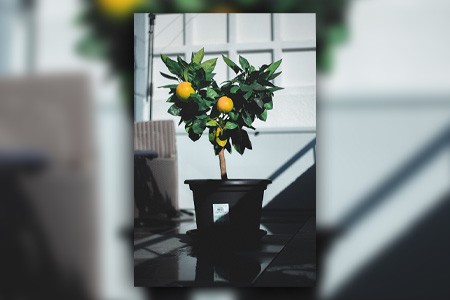
Lemon trees grow best in zones 9-10, and they usually grow to a height somewhere between 15 to 20 feet. They are summer fruit trees that are very sensitive to frost or cold, so a sunny environment with rich and loamy soil is ideal for optimum growth of lemon trees.
Lemons contain abundant amounts of citric acid and vitamin C, which have significant health benefits. As a result, they are the most common fruit we associate with citrus trees (though some might say the orange comes to mind first).
Some common fruit tree varieties of lemon include Sun Gold and Bears, while some examples of dwarf varieties include Eureka and the Meyer lemon, which are suitable for smaller and confined spaces.
Lime Tree
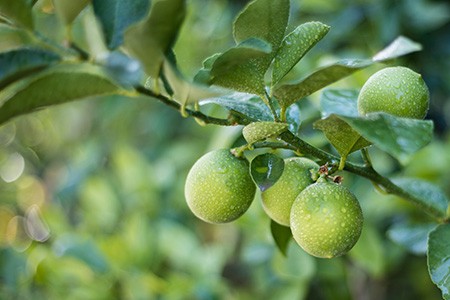
Having access to any of the types of lime in your own yard is a wonderful thing. A popular choice for people looking to grow different fruit trees, the lime tree will provide you with a harvest of the tangy and zesty lime that goes great with lemons and all types of oranges.
Start growing them in containers inside and once they're established, you can transplant them outdoors where they'll be more resistant. But do this gradually. Introduce them to the outdoors for a few hours a day, and then for longer periods until you finally plant them.
Some kinds of limes you may consider are finger limes, key limes, or even go for the hybrid limequat. As you already know, you'll enjoy squeezing their juice on many dishes and drinks or garnishing a drink glass with a slice. These types of fruit trees can really spice up your meals. If you want to collect juice more efficiently and store it, look into the many types of juicers to help you do this.
Mango Tree
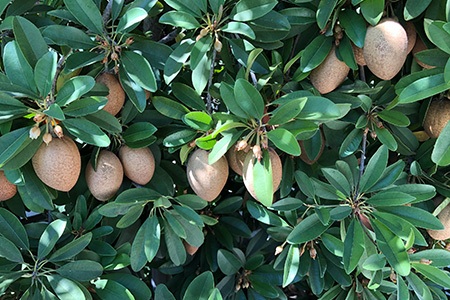
Mango trees only grow in a tropical environment with plenty of sunlight. They have low cold tolerance, so only States like Florida and California can grow them properly. However, mango trees can grow quickly and reach 100 feet or higher depending on the weather and soil.
Mangos are rich in soluble fiber and an excellent source of vitamin C. They also contain antioxidants and have anti-inflammatory properties. Not to mention, they taste delicious as well. These are different kinds of fruit trees than we might first imagine, but they're such a fulfilling tree to have around.
Orange Tree
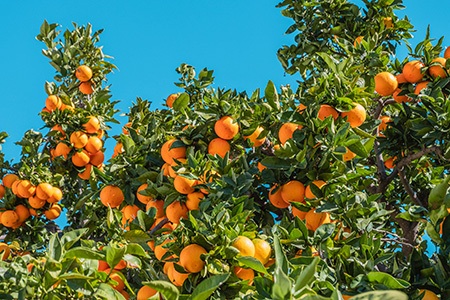
Orange trees are sensitive to frost and cold, making them ideal for growing in a warm environment with a lot of sunshine. They grow to a height typically around 30 to 35 feet tall and in USDA hardiness zones 9-11.
Some sweet varieties include Trovita, Ruby, and Washinton Navel, while Willowleaf and Seville are of the sour type. There are plenty of fruit tree varieties even just among the orange category for you to explore for decades to come.
Apricot Tree
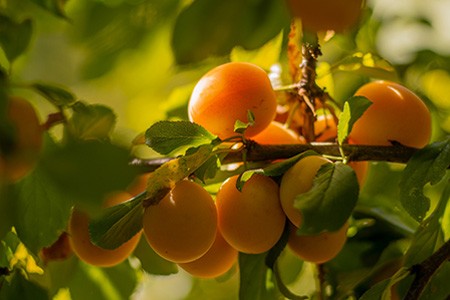
Apricot trees thrive in hardiness zones 5-9 with plenty of sunlight and well-drained, loamy soil, and they are sensitive to cold and frost. The tree blossoms in early spring with beautiful white and pink flowers beautifying their surroundings.
Apricot tree bears nutritious fruits. They are rich in copper and vitamin A, which can strengthen your bones and heart if consumed daily. The apricot fruit skin has a velvety texture, and the flesh is a mixture of sweet and tart.
Avocado Tree
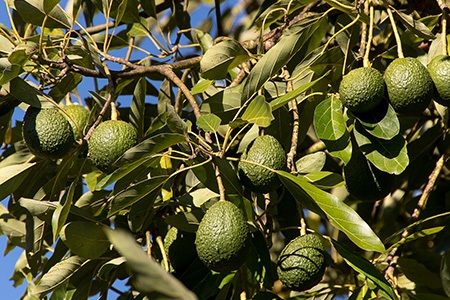
Avocado trees are most likely to have been originated from South Mexico, so understandably, they do not fare well in cold and windy environments. They, however, thrive in USDA zones 8-11, accompanied by rich, well-drained soil.
Guacamole is an American favorite – making avocados extremely popular in the US. The fruit has one massive seed in the middle, surrounded by oily flesh. The outer shell has been thinner by selection pressure, and the fruit has many varieties.
Pear Tree
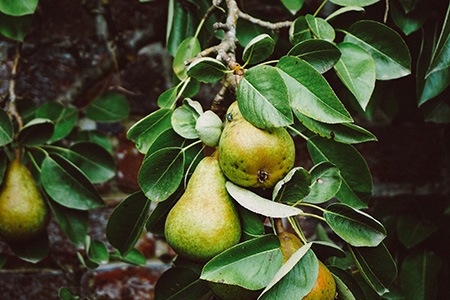
The pear fruit is delicious, but it is also jam-packed with fiber and protein. These types of fruit trees are relatively easier to grow and can be found in Asia, Europe, and northern Africa, and can have red, yellow, green, or brown skin.
The pear tree can grow up to 55 feet tall, and they thrive in hardiness zones 3-10. They are pretty resistant to pests and diseases, making them lower maintenance than most of the other fruit trees.
Peach Tree
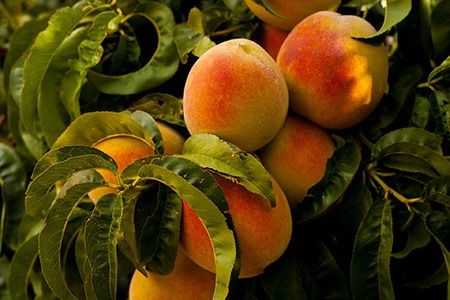
Peach trees grow to around 23 feet, but you can keep them about 10 feet tall with regular care and maintenance. They thrive in a dry and temperate climate, but a cold dormancy period is required at the start.
Initially cultivated in Northwestern China, peaches are delicious and nutritious whether eaten on their own or as a star in classic American desserts such as pies and peach cobbler. The flesh is light or dark orange and tastes sweet, and its skin has a fuzzy feel to it. Take a look at the 39 types of peaches we've talked about if you're going to choose this wonderful tree.
Cherry Tree
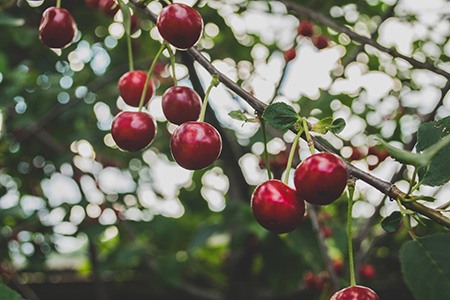
Since cherries are small, their trees tend to be smaller as well. They can range from 13 feet for some of the smaller varieties and go up 26-40 feet for some more significant types. Sweet cherries grow well in hardiness zones 5-9, while the sour cherry trees thrive in hardiness zones 4-6.
Although only two varieties of cherries are primarily cultivated in the US, there are over 1000 different varieties, among which we've covered 22 types of cherry here. Sweet cherries include Lapins and Rainier, while cherries such as Morello and Montmorency fall into the sour variety.
Fig Tree
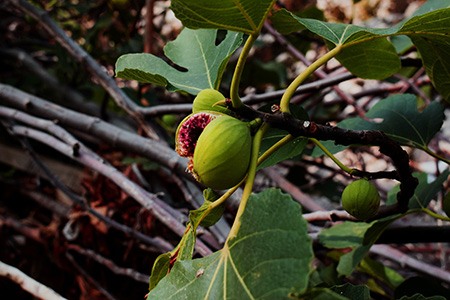
Native to the Middle East and Asia, figs have been cultivated for centuries around the globe. The skin ripens to a beautiful purple color, and the flesh is red and juicy with a rich sweet taste filled with numerous tiny seeds. We've discussed the many types of fig trees before if you're interested.
These different types of fruit trees are classified as small trees growing to about 10 to 12 feet. Most fig varieties thrive in warm hardiness zones 8-10, while some types can handle colder environments that come with zones 7 and 6. Some warm fig varieties are Sierra and Kadota, while Chicago Hardy and Celeste are popular cold-hardy figs.
Pomegranate Tree
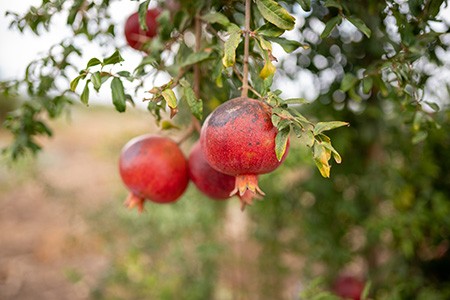
The pomegranate tree is relatively small, growing to about 12-20 feet. The fruit is bright red and filled with nutrients and seeds bursting with flavor. Growing them in hardiness zones 7-12 is ideal for them to thrive, with plenty of natural sunlight and loamy soil.
The pomegranate originated from India and Iran and was later brought to California by Spanish settlers. Now they are trendy in the US and are used in smoothies, baking, and even making wine.
Persimmon Tree
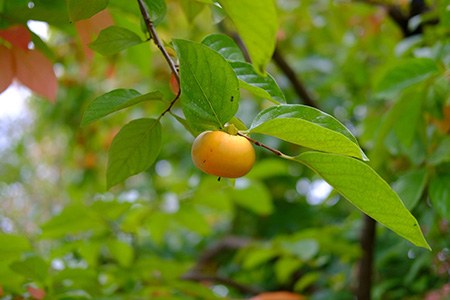
Persimmon trees can grow 70 feet and has a round top. They thrive in hardiness zone 4-11, with adequate sunlight and slightly acidic soil.
Being native to the US, persimmons generally have two varieties; astringent, which are pepper shaped and ideal for baking, and non-astringent, which are best eaten raw and are shaped like tomatoes.
The flesh ripens into a dark brown hue, and the skin color ranges from yellow to red, depending on the variety. These are different fruit trees than most of us are used to, but that's good. Let's expand our horizons.
Plum Tree
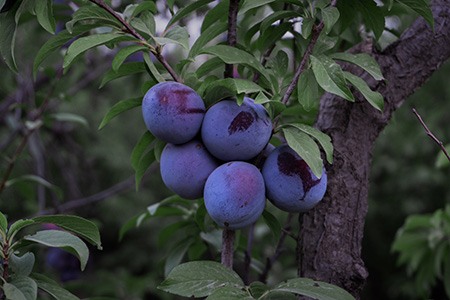
In any list of fruit trees, the most low maintenance one you'll find is the plum tree. They belong to the same genus of trees as peaches and cherries, which we recognize as drupes that have a single stone at the center of the fleshy fruit.
There are plenty types of plums to choose from that range from purple colors to red, yellow, and green, depending on the look and taste you want. They grow well in the USDA Hardiness Zones 5 through 7. What makes them especially easy to work with is that they're self-pollinating.
Nectarine Tree
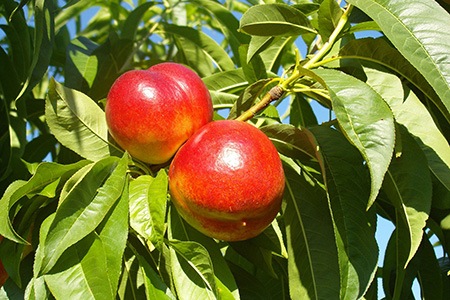
Nectarine trees generally thrive in environments with plenty of sunlight, but any warm climate will do just fine. These types of fruit trees are, however, susceptible to cold and frost. Sandy and loamy soil are ideal for growth, but any other soil type will also suffice.
Nectarines are similar to peach except without fuzzy skin. Like most stone fruits, they come in 2 varieties: freestones and clingstones. Freestone nectarine is effortless to de-pit, while clingstone nectarine pits stick to the flesh.
Olive Tree
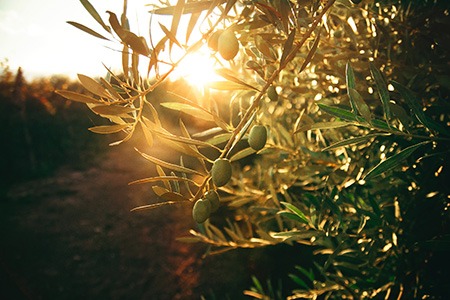
Believe it or not, olives are fruits. You can grow a full blown olive tree, a dwarf variety, or even grow them as shrubs. There's all different kinds of fruit trees you can grow to spawn some tasty olives. Some people really like olives themselves, though everyone understands the value of olive oil, and you may enjoy trying to manufacture it yourself.
There are hundreds of olive tree cultivars due to the booming olive oil industry. You can get in on it too right at home. Make sure you understand their desire for calcareous soil and the other peculiarities of the olive tree, such as pests, diseases, and even weather conditions.
Quince Tree
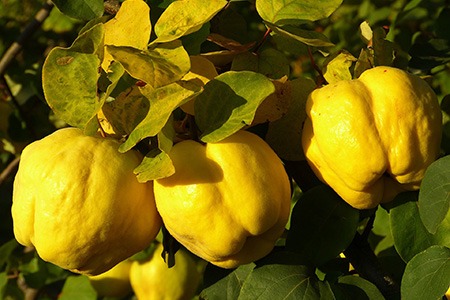
A quince is a pome fruit that is in the family that also contains pears and of course apples. You may not have heard of quinces because people don't eat the flesh like we would an apple. They're largely used in many types of jams and jellies.
These are probably the least popular fruit tree varieties to be grown at home, but I wanted to make sure you knew the option was there. The trees themselves are pretty with their fragrant pink flowers. They'll grow up to 25 feet high, so make sure you have room.
Tangerine Tree
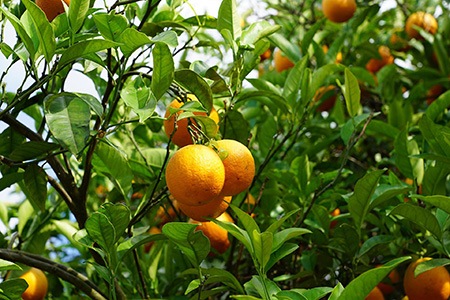
Not everyone wants the sour and tangy flavors of lemon and lime, nor the familiar taste of an orange. That's where tangerines come into play. What makes people enjoy tangerines is how easy they are to peel and how much less of a mess they make when eaten.
You can grow gigantic tangerine trees up to 25 feet tall if you want or you can prune them and train them to be as low as ten feet tall. Just check to make sure the kind you get are self-pollinating.
Almond Tree
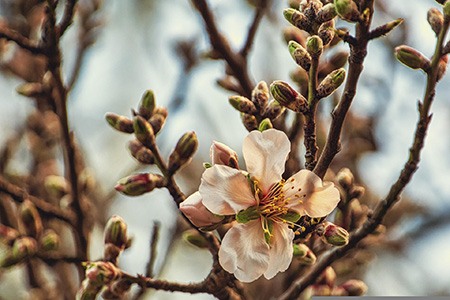
While the various types of almonds aren't necessarily a fruit, they're a wildly popular tree to grow at home, enough so that they warrant a mention here. They do desire a warm climate, so keep it below the hardiness zone 8 and you should be fine.
Almond trees are self-fertile so you only need one. You can shape and mold it with pruning to keep it shorter. People actually grow dwarf almond trees as low as 8 feet in height. You'll be enjoying your almond harvest between late September up to the middle of October.
Types of Fruit Trees to Give You an Endless Harvest
Check if the soil or garden location is suited for growing fruit trees. Best garden soils are the ones with well-drained topsoil. The different fruit trees you wish to plant should be chosen based on the type of produce, species, fertilization, and yield date. Simply put, select fruit tree species that will thrive in your climate.
Our word of suggestion is that if you want the tastiest and juiciest fruits, know your surroundings and take advantage of it by choosing the fruit tree it suits the most and reap the fruity rewards in no time.
This sums up our list of the most common yet different types of fruit trees and the fruit they produce. However, if you want to grow any of the trees we featured, keep an eye out for their climate, environment, and soil needs.



